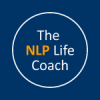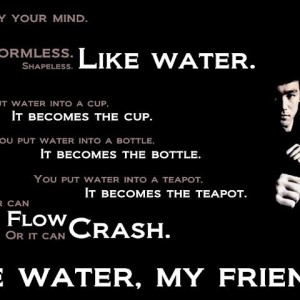“You must be shapeless, formless, like water. When you pour water in a cup, it becomes the cup. When you pour water in a bottle, it becomes the bottle. When you pour water in a teapot, it becomes the teapot. Water can drip and it can crash. Become like water my friend.” –Bruce Lee
NLP presupposes the person or element with the most flexibility in any given situation will have the best results. This is called the law of requisite variety.
If what you are doing is not working, do something else. Just like water that will change its shape to fit a container, we too much are willing to change to adapt to the situation we are in.
NLP presupposes that every one of us is responsible for our own life. We may not be able to control external events but we are capable of controlling our reactions and responses to those events. If we keep reacting and responding in the same way, we will always get the same result. A person with the flexibility to adapt and change repeatedly his/her behaviour whenever something they are doing is not working. He modifies his behaviour until he achieves his goal.
Flexibility applies as much to our behaviour as to our thought. Rigid attitude or thinking reduces the desired outcome in our interaction with other people.
Always be flexible enough to explore and search for an appropriate strategy whether for a better life or a better learning habit rather than being continuously stuck with something in the present that does not work. If you want something new, you have to do something new which could well be better than holding on to the same strategy what is not working.
By increasing choice, you’re choosing expand your possibility of success. The more choices you have, the freer you are and the more influence you have over yourself and others.
Greater choice comes from being able to change your perspective on the situation. The 3 main perceptual positions in NLP are:
- Associated to self. In your body, looking at the situation from your point of view.
- Associated to other. Taking the other person’s frame of reference.
- Associated to the “observer” or “witness”. Taking the objective perspective. Being the “fly on the wall”.
Understanding the 3 perceptual positions and becoming comfortable doing so in all contexts broadens your scope of choice.
With practice one can assume multiple perceptual positions simultaneously. With that comes the freedom to more consciously choose your thoughts, feelings and actions in all types of situations.
Example:
You would like to hang a painting on the wall but you are not too sure where or at what height to hang it.
From the first person seeing in the situation from your own eyes you can map out the places on the wall you could hang the painting.
Taking one step back then to the left you could take up the position of a friend to whom you trust helping you with challenge. You could now look at the wall from a “fresh pair of eyes” Thinking and acting like that person you can now plot out a new position for the painting.
Once you have done this take a step to your right and another step back you can take up the position of someone who has just stumbled in to the situation and over heard you and your friend’s plans for the painting. With this position you can now look to the first position armed with the suggested positions from the first and second position and give your judgement on where you think the painting should be.
Then finally you step back into the spot where you started off in first position and observe the advice on where the painting should be.
Changing our behaviour is not all that difficult when we believe there are many alternatives which we can choose and that a solution to every difficulty is always available. We just need to be prepared to try hard to seek it out. All one needs is being flexible.

